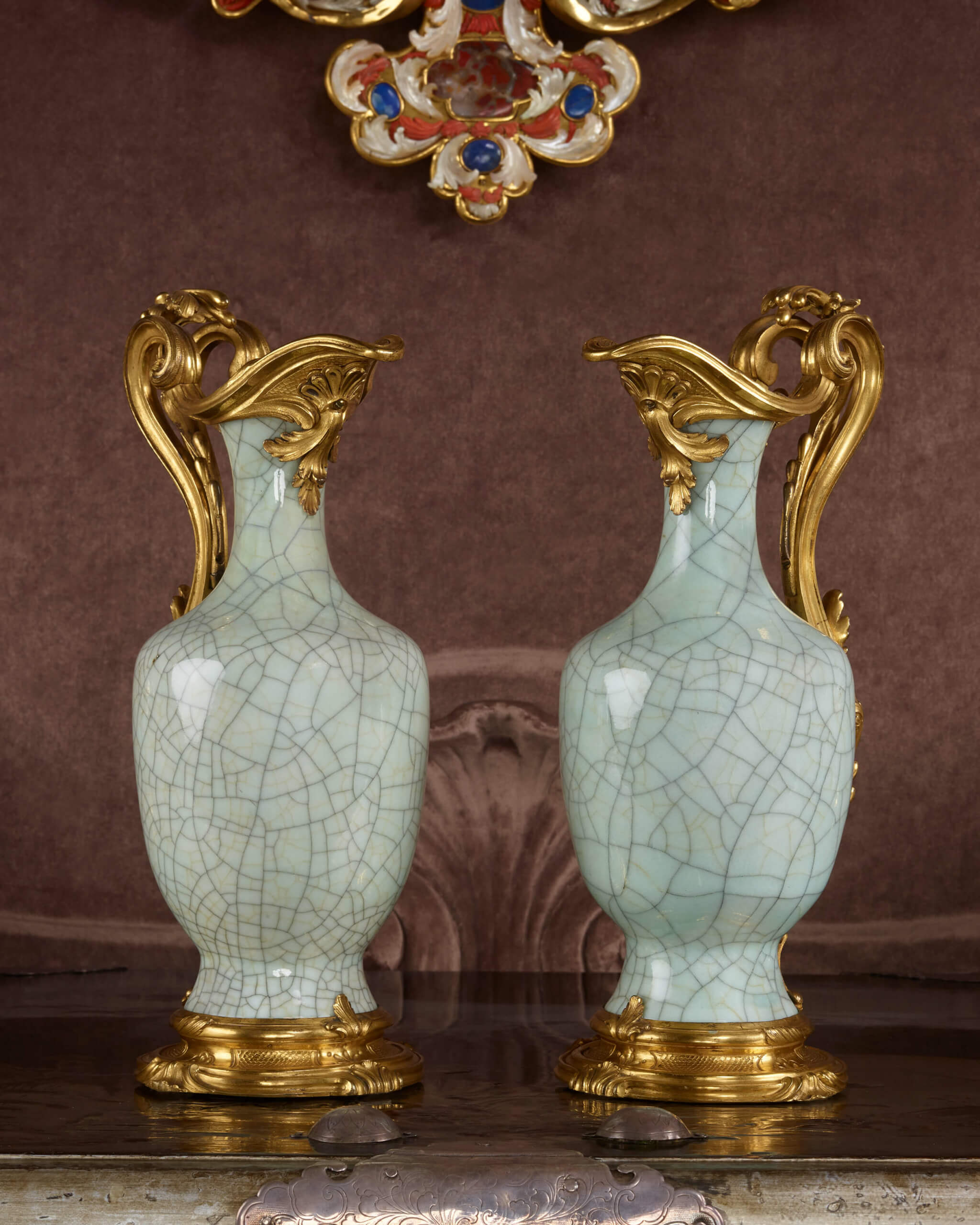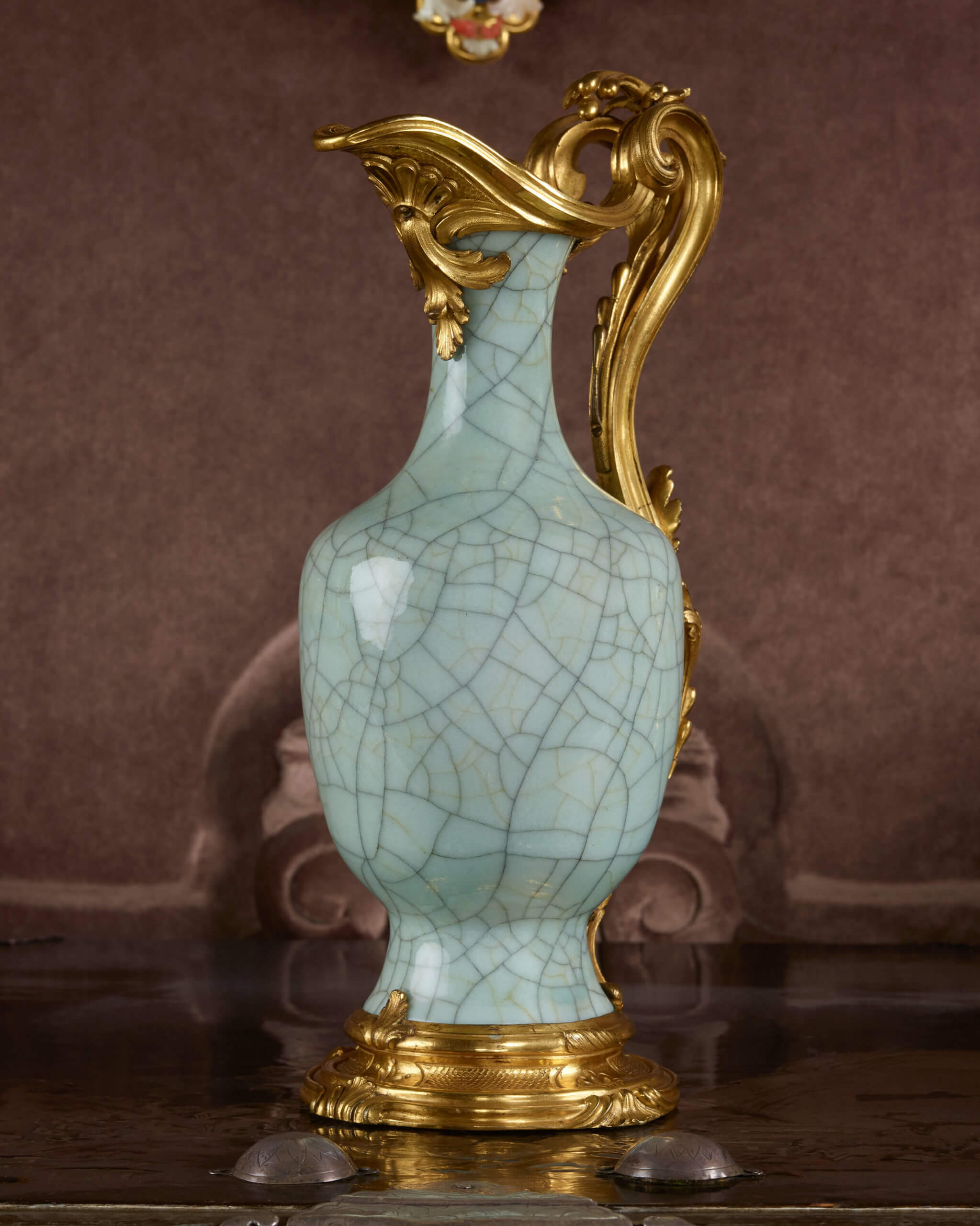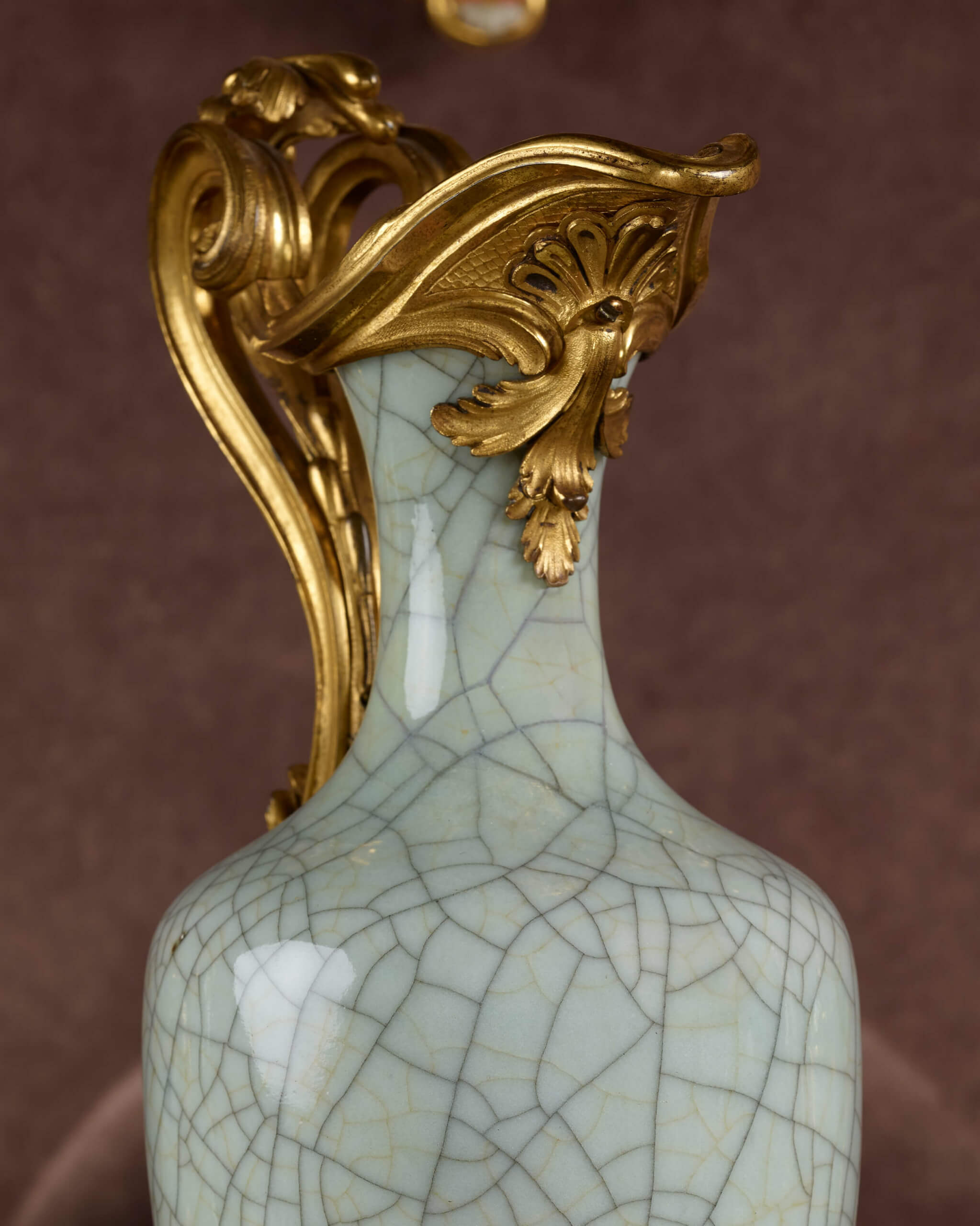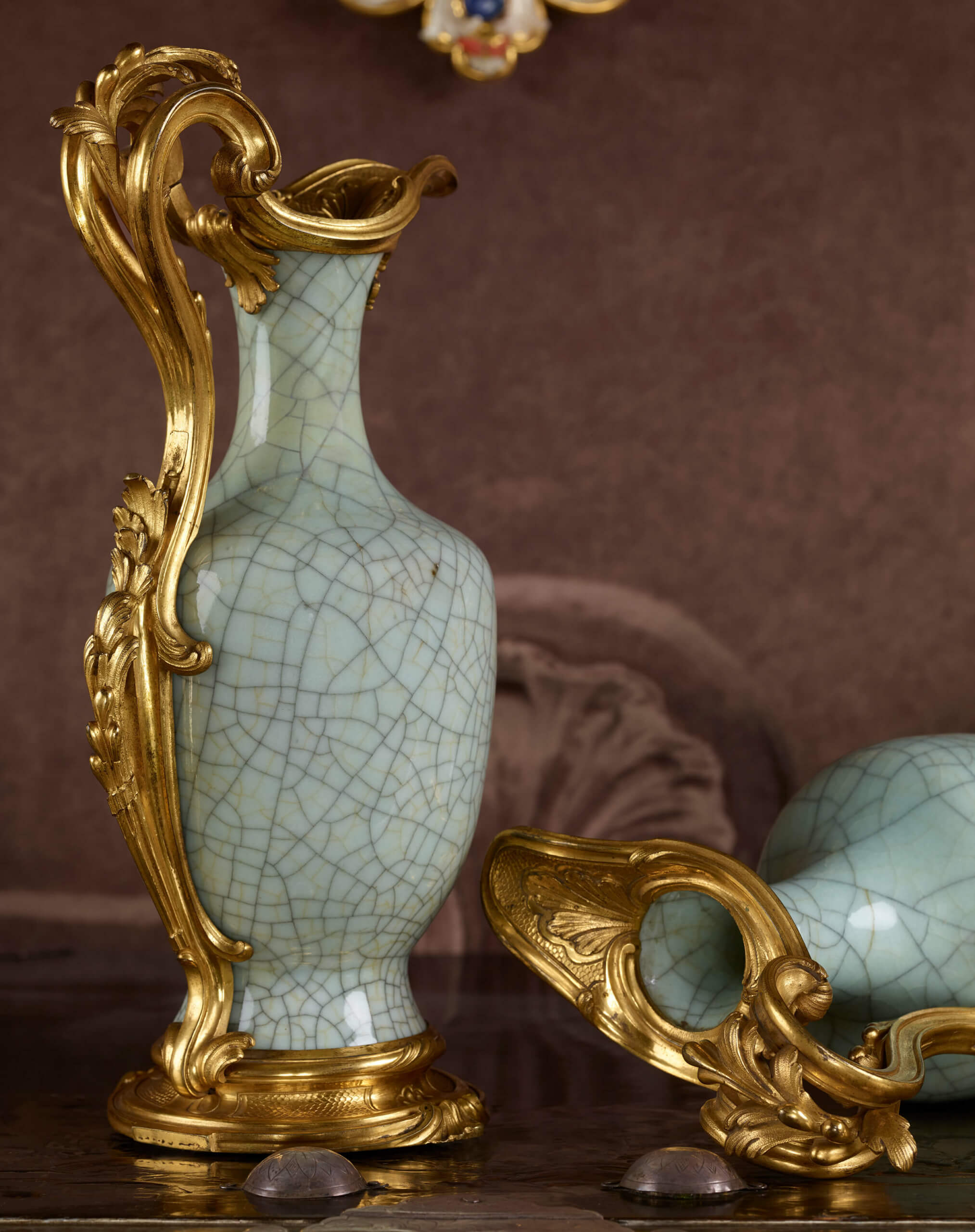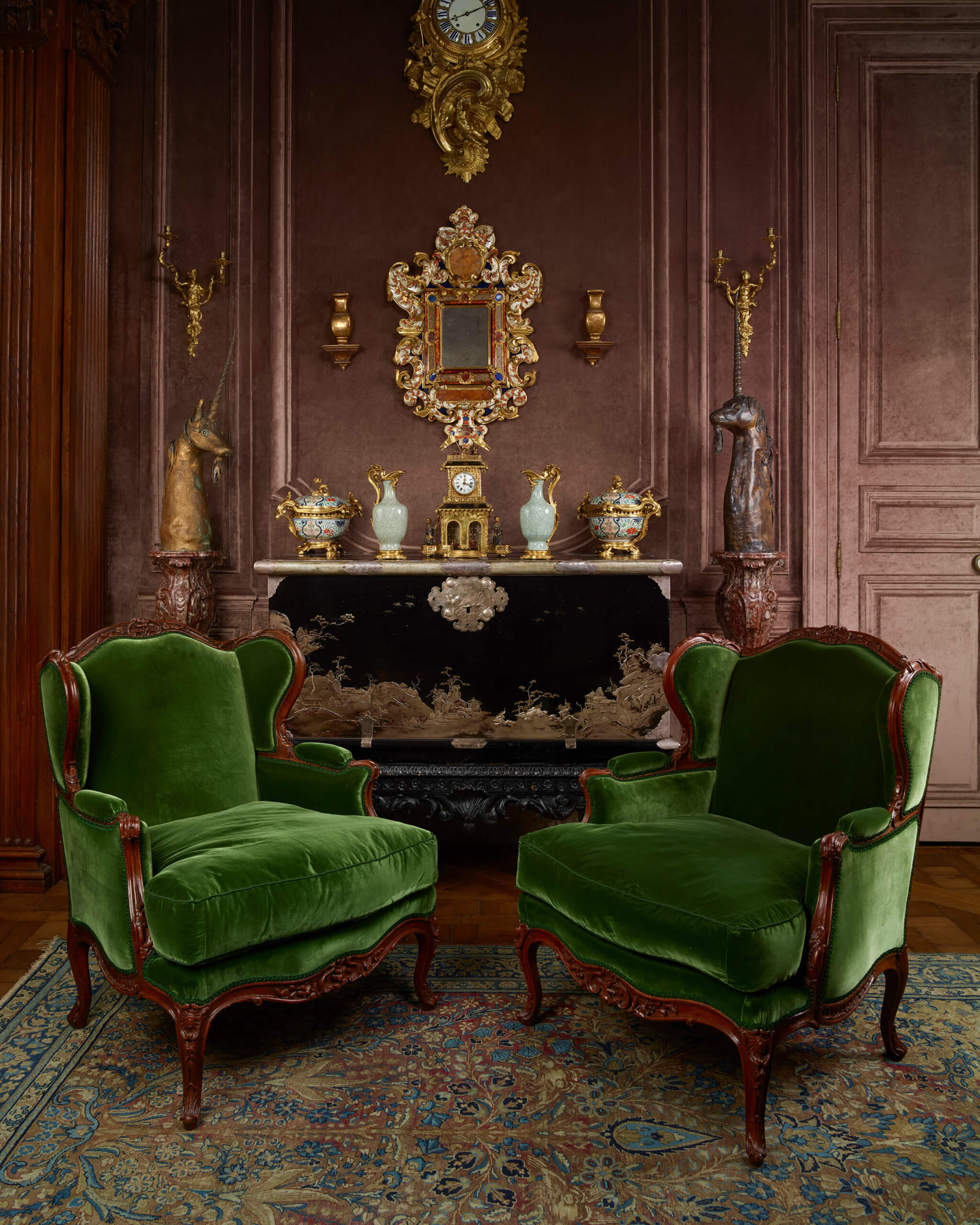

Guan type porcelain with crackled celadon cover: China, Jingdezhen, Jiangxi province, late Yongzheng (1722-1735) or early Qianlong (1736-1795) periods, circa 1730-1740.
Mounts in chased and gilt bronze: France, Louis XV period, circa 1750.
H. 31.5 cm. (12 ½ in.); Base: 12.6 x 11.8 cm. (5 x 4 ½ in.).
MARKS AND INSCRIPTIONS : Collection Jacques Guerlain, visible on a label also bearing the collector’s monogram, stuck under the base of each vase.
PROVENANCE: possibly collection of the abbé Jean-Bernard Le Blanc (1707-1781), post-mortem auction in Paris, under the supervision of Jean-Baptiste-Pierre Lebrun (1748-1813), on 14th February 1781 and following days, lot n°. 117; collection of Jacques Emile Louis Joseph Dubois Chefdebien (1867-1940), in his private mansion located at 27 Avenue Bosquet, in the 7th arrondissement in Paris, auction in Paris, Hôtel Drouot, Mr. Etienne Ader, 13th and 14th February 1941, lot n° 49; collection of Jacques Guerlain (1874-1963), in his apartment located near the parc Monceau, at 22, Rue Murillo, in the 8th arrondissement in Paris.
LITERATURE: Stéphane Faniel (ed.), Le Dix-huitième Siècle Français, Collection Connaissance des Arts, Paris, 1956, p. 113, repr.
LITERATURE on Duplessis Père: Geneviève Levallet, “Jean-Claude Duplessis, Orfèvre du Roi”, La Renaissance de l’Art Français et des Industries de Luxe, February 1922, p. 60-67; Pierre Ennès, Un défi au goût, 50 ans de création à la manufacture royale de Sèvres (1740-1793), catalogue of the exhibition held in the Louvre Museum from 20th March to 23rd June 1997, Paris, 1997, p. 26-39.
This pair of ewers is exceptional in two regards, and stands out for the extreme quality of their gilt bronze mounts, characteristic of the work by Jean-Claude Chambellan Duplessis (1699-1774), known as Duplessis Père, one of the most important bronze makers active in Paris in the mid-18th century, as well as for the beauty and extreme rarity of the two “baluster”-shaped vases in Chinese porcelain with a Guan type celadon cover from the late Yongzheng (1722-1735) or early Qianlong (1736-1795) periods which compose them.
Characteristic of Duplessis Père’s work, the mounts of our vases were used to turn them into “buires”, i.e. ewers. The precision of their fitting to the ceramic and the quality of their assembly—elements that are applied and mounted with screws and not “fused”—are absolutely remarkable and bear witness to the work of a great master.

